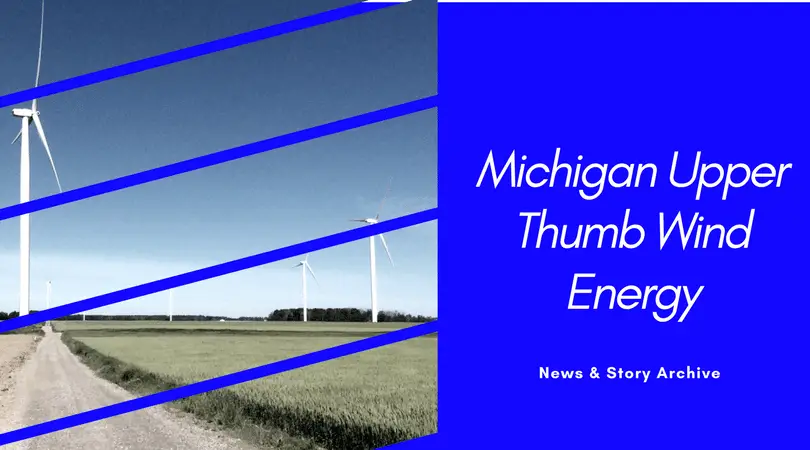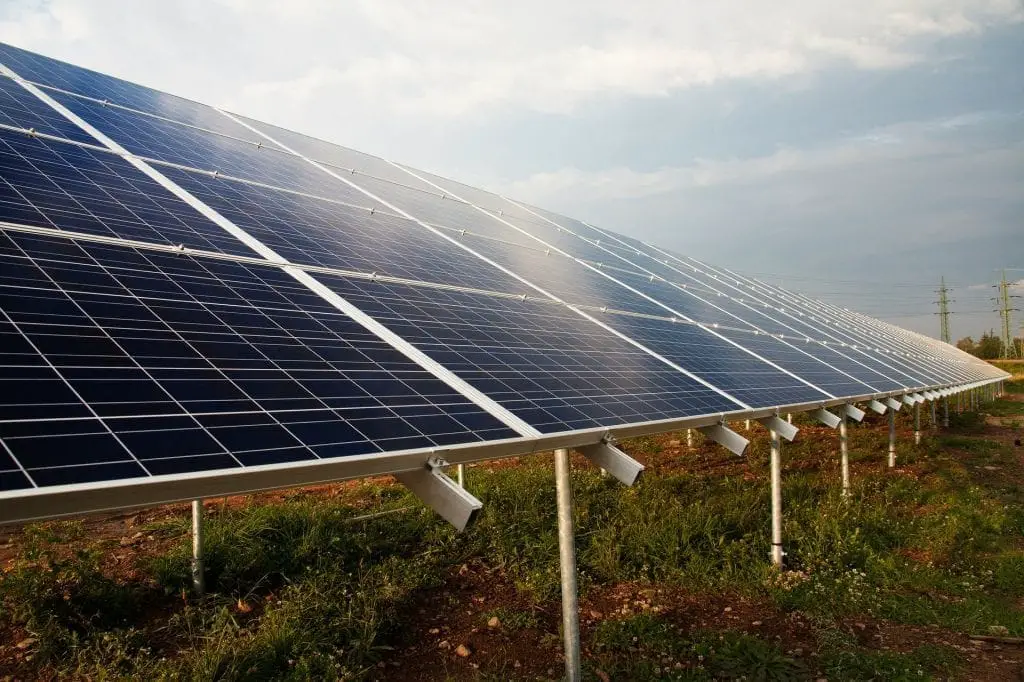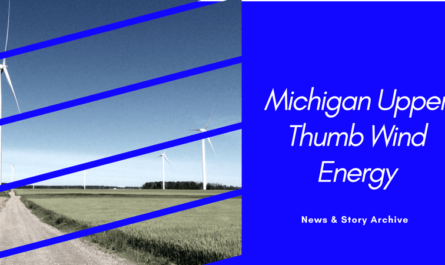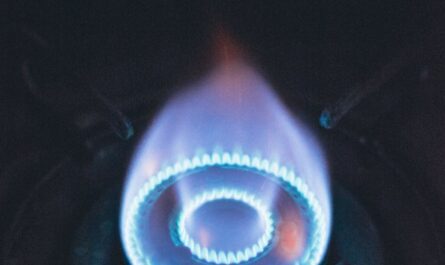An Evergreen Approach to Renewable Projects
Since 2008 Michigan has been the developmental area for highly dense wind energy projects. Surrounded by Great Lakes wind, and fueled by a renewable objective mandate, the state has been a target for wind energy development particularly in the Thumb region along Saginaw Bay, the shoreline of Lake Huron and in pockets of specific areas near Lake Michigan. This is detailed in a Michigan wind farm map showing every planned and completed project underway.
This development usually means that thousands of contiguous acres are targeted with ten’s or hundreds of wind turbines within established agricultural townships. The resulting effects on the rural communities have resulted in deep divides between neighbors. Also a patchwork of zoning regulations that are still playing out across this region. This approach is unsustainable. In future investment, even within existing wind farms may be impacted by this patchwork of overlay regulation and zoning. It’s clear that a new approach is needed. It must be coordinated to accommodate the general interests of the community. It must also offer ongoing economic and environmental benefits for hosting renewable energy platforms.
A Sustainable Approach for Wind Farm Development
The Three Prong Renewable Project Approach; Selective Siting, Engineer for Obsolesce and Invest in Storage Technologies.
Selective Siting for Wind Projects

The first and most pressing problem is the current “carpet bombing” of wind development within a geographic area. Developers, using wind data from survey towers will target large swaths of land typically consisting of 10-30,000 acres. To complicate matters these areas typically overlay multiple townships which may, or may not, have established zoning regulations. Local zoning consisting of setbacks and other rules of various forms will ultimately drive location selection. The result is a virtual “have” or “have not” patchwork of wind leaseholders who by mere luck be able to support a turbine development site. The results are deep splits in the project area with some getting an income windfall while others endure a perceived eyesore and get nothing.
This scheme needs to be turned on its head. Instead of “Cherry Picking”, the industry needs to specifically define areas whereby all landholders benefit from wind development in various degrees based on if they physically host the development on their land or are impacted as adjoining landowners or other factors. (Such as easement access) This ensures that all benefits and are part of the renewable energy solution. These “energy zones” could be incentivized by the state in a similar fashion to economic zones. The community’s looking for an economic opportunity could apply for such a status. This approach turns from a defensive posture today to one that developers know that they are being welcomed by the area.
Engineer Renewable Wind Energy Projects for Replacement
The next element is the physical plant itself. Wind turbines are designed with a 20-25 year estimated life span as a capital asset. This means at the end of the life that the tower is removed from service or refurbished anew. With the rapid advancement of technology and dropping costs, it’s resulting in inefficient and stranded resources as soon as they are built. What is needed is an approach where it’s expected that the generating technology will be updated or replaced several times within its physical lifespan. When this technology replacement occurs the opportunity is opened for the landowner to re-negotiate the lease with new terms and payments. Need-less-to-say this window must also include the potential for removal and restoration of the site.
The Renewable Energy Storage Problem
The last element of this approach is the most problematic; energy storage technology. Despite showing success with its flywheel approach, the spectacular failure of companies like Beacon Power to bring to market energy storage technology has resulted in ongoing questions of the true long term viability of naturally harnessed power generation. Renewables can only operate with active wind or sunlight. Without a viable energy storage solution, there can be no consideration of replacing or offsetting fossil-fueled generation. The bright spot is that if and when this technological hurdle is achieved, renewable energy will then become at the forefront of our solution. This will also curtail fossil fuel dependency and as a check on global warming.
The need for the utilization of renewables is clear. It’s an implementation for renewable wind energy projects is a ham-handed approach that has pitted neighbor against neighbor. It also drove local government expense up with defensive zoning and adversely affected communities. A three-prong method of incentivized selective siting, engineering for obsolesce and energy storage will serve to make renewables a more welcome economic option.
Related Reading
- In 2012 a Michigan township was almost split apart due to wind farm development. Twenty-one large landowners, unhappy with the outcome of a public referendum vote which curtailed the development of wind turbines in the shoreline community. They attempted to succeed from Lake Township. Wind Farm Secessionists
- Over the past twenty years, the Great Lakes region has been steadily increasing the number of new wind projects and wind energy output. Now that pace looks to have slowed with more local communities placing acting tighter zoning control over industrial wind development. However, growth continues as the cost of new projects declines. Is Wind Energy’s Future in Michigan Limited?
- Huron County placed a moratorium on new development of wind power in 2015. This gave rise to the possibility that other wind and solar projects would pause in the Great Lakes region. It was thought that the commissions wind farm moratorium would have a chilling ripple effect on other renewable wind energy projects underway in the Great Lakes region and Ontario. That didn’t happen. Huron County Wind Farm Moratorium Didn’t Stop Wind Growth in Michigan
- Consumers Energy has been conducting its own alternative energy projects since 2014. It owns and operates six industrial wind farms in Michigan and Ohio. The company contributes over 1000 Megawatts of power from its wind farm base. In the future, Consumers Energy wind farms will have plans to build up to 200 new turbines to help achieve its goal of 550 megawatts of wind capacity by 2021. Consumers Energy Wind Farms Continue to Grow
Discover more from Thumbwind
Subscribe to get the latest posts sent to your email.





